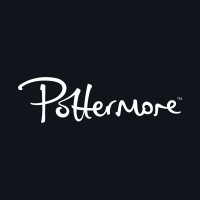
Whether it’s revealing your magical identity, demonstrating your house affinity or wondering what the most appropriate shade for a wedding is, there’s no denying colours are important in the wizarding world.
Here are a few of the most symbolic.
Red

Along with gold, red is one of the colours of Gryffindor; both were chosen because of their connection to Gryffindor’s element, fire. It’s also connected to the fiery Hagrid, whose first name is Rubeus, coming from Latin ‘rubeo’ meaning ‘red’. J.K. Rowling explains that the name is a deliberate nod to the alchemical process associated with transformation, with ‘the red’ being an essential mystical component. Hagrid is passionate, warm and, having been sorted into Gryffindor, red through and through.
Outside the wizarding world, red represents energy, passion and action – so its association with Gryffindor, ‘where dwell the brave at heart’, is particularly apt.
White

The counterpoint to Hagrid is Dumbledore, whose first name – Albus – means ‘white’. Where Hagrid is associated with emotion, Dumbledore represents calm, measured thought. In the alchemical process that his name also has its roots in, ‘the white’ refers to asceticism, the idea of reaching a spiritual state through self-denial. It’s about striving for brilliance by detaching yourself from the world – like Dumbledore, and again a deliberate name choice.
Colour psychology specifies that white is the colour of purity and innocence – we doubt Dumbledore would lay claim to either, but it’s certainly a calming colour and a natural balance to the passionate earthiness of red.
Green

One of the colours of Slytherin house, green is associated with Dark magic, jealousy and Harry (and Lily) Potter’s eyes. In short, it has a lot of connotations.
Like Gryffindor’s colours, the green and silver of Slytherin are connected to the element they most closely represent, water. In wider folklore, green has long had a supernatural connection. J.K. Rowling explains that the colour is said to belong to faeries, and it has an association with misfortune and death. Consequently, green should never be worn at weddings.
Green does also have positive associations, being linked with energy and rebirth. In the wizarding world, J.K. Rowling tell us, it is used to reveal magical status to other wizards, and is often in combination with the colour purple. So like some of the students of Slytherin House, the theory behind the colour is somewhat slippery.
Purple

Purple has a long association with both royalty and religion. It’s also tied to imagination and spirituality. In the wizarding world, J.K. Rowling has identified purple as a colour associated with noble, helpful magic – which is why Dumbledore is represented by the colour purple on this very website.
Blue

Ravenclaw’s element is air and its house colours are blue and bronze, with blue representing the sky. In colour psychology, blue means trust, responsibility and loyalty – which actually sound more like Hufflepuff traits – but it’s also a calming colour that equates to a higher level of intelligence. That’s more like it, eh, Ravenclaws?
Historically, blue has been associated with the cult of the Virgin Mary and it also appears in the heraldry of many Kings of France, making it spiritual and royal. Nowadays, blue is one of the most ubiquitous clothing colours, something the designers of this website discovered when studying the Harry Potter films – Harry, apparently, nearly always wears blue.
Yellow

The colours of Hufflepuff house are yellow and black, representing wheat and soil. Generally, as the lightest hue in the spectrum, yellow is associated with cheerful things – sunshine, daisies, butter, mellow. That spell of Ron’s might not have turned his rat Scabbers yellow, but it’s a happy colour. Luna Lovegood’s father certainly believes this, as he wears sunny colours to celebratory events like weddings.
Perhaps unsurprisingly, given its association with Hufflepuff, in psychology yellow is the colour of the practical thinker, inspiring people to find new ways of doing things.
Pink

There are as many shades of pink in Harry’s world as there are types of people – from the shocking punk pink of Tonks’s hair to the silk of the Fat Lady’s dress, and even porky Dudley and the salmon shades associated with Aunt Petunia.
But no witch or wizard is as firmly associated with a colour as Dolores Umbridge. For her, pink is an affectation as false as her laugh and her kittens. It is the colour of Valentine’s Day, of love and romance. It is also a colour – rightly or wrongly – with girlish, sweet associations, and it is perhaps this that Umbridge wishes to project when she insists on dressing herself head to toe in it. But Umbridge being who she is, it’s a colour that comes to signify only horrible things – punishments designed to inflict pain, a wilful, power-hungry refusal to listen to reason, and a cruel disregard for anyone that doesn’t match up to her ridiculous ideals.
Want to join the Wizarding World Book Club? Sign up here to read along, gain awards and discover new content every week. You can also join the conversation over on Twitter.


